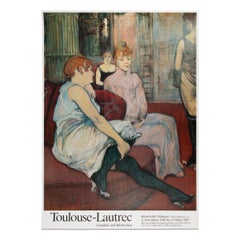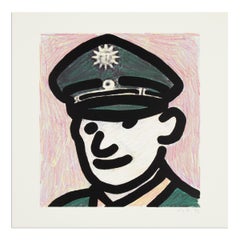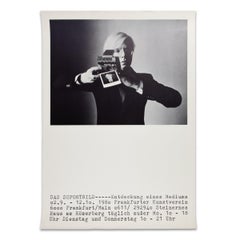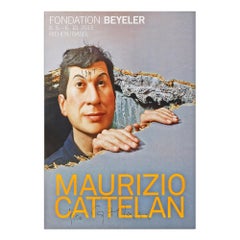Want more images or videos?
Request additional images or videos from the seller
1 of 8
Henri Tououse-Lautrec: Original Exhibition Poster from 1987, Kunsthalle Tübingen1987
1987
$782.18List Price
About the Item
- Creation Year:1987
- Dimensions:Height: 33.19 in (84.3 cm)Width: 23.39 in (59.4 cm)
- Medium:
- Movement & Style:
- After:(After) Henri Toulouse Lautrec (1864, French)
- Period:
- Condition:
- Gallery Location:Hamburg, DE
- Reference Number:1stDibs: LU704315408872
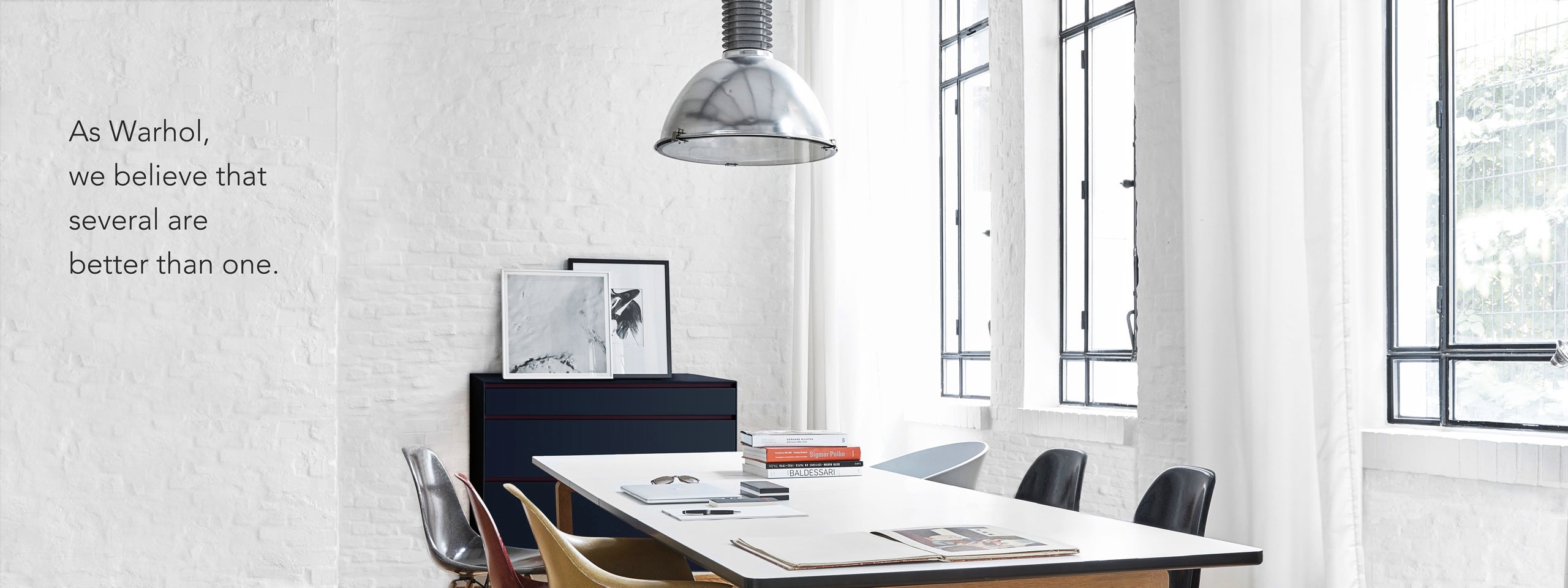
About the Seller
4.9
Gold Seller
Premium sellers maintaining a 4.3+ rating and 24-hour response times
Established in 2017
1stDibs seller since 2017
184 sales on 1stDibs
Typical response time: 11 hours
Authenticity Guarantee
In the unlikely event there’s an issue with an item’s authenticity, contact us within 1 year for a full refund. DetailsMoney-Back Guarantee
If your item is not as described, is damaged in transit, or does not arrive, contact us within 7 days for a full refund. Details24-Hour Cancellation
You have a 24-hour grace period in which to reconsider your purchase, with no questions asked.Vetted Professional Sellers
Our world-class sellers must adhere to strict standards for service and quality, maintaining the integrity of our listings.Price-Match Guarantee
If you find that a seller listed the same item for a lower price elsewhere, we’ll match it.Trusted Global Delivery
Our best-in-class carrier network provides specialized shipping options worldwide, including custom delivery.You May Also Like
François Desnoyer - Free Child - Handsigned Original Lithograph
By François Desnoyer
Located in Collonge Bellerive, Geneve, CH
François Desnoyer - Free Child
Original Lithograph
Handsigned
Dimensions: 38 x 28 cm
François Desnoyer was a French visual artist who was born in ...
Category
1950s Post-Impressionist Portrait Prints
Materials
Lithograph
$722
H 14.97 in W 11.03 in D 0.04 in
La Marchande des Quatres-Saisons
By Edgar Chahine
Located in Middletown, NY
Etching with drypoint on cream wove paper, 11 3/4 x 13 3/4 inches (297 x 347 mm), full margins. Signed in pencil and numbered 32/40, lower margin. Minor mat tone and several small lo...
Category
Early 20th Century Post-Impressionist Portrait Prints
Materials
Handmade Paper, Rag Paper, Drypoint, Etching
After Tea by Ludovic-Rodo Pissarro - Wood engraving
By Ludovic-Rodo Pissarro
Located in London, GB
After Tea by Ludovic-Rodo Pissarro (1878-1952)
Wood engraving
12 x 13.2 cm (4 ³/₄ x 5 ¹/₄ inches)
Initialled and titled in the plate
Executed circa 1917
Artist biography
Ludovic-Rod...
Category
1910s Post-Impressionist Figurative Prints
Materials
Woodcut
$619
H 4.73 in W 5.2 in
Girl in Blue, Modern Portrait Lithograph by Charles Levier
By Charles Levier
Located in Long Island City, NY
Girl in Blue
Charles Levier, French (1920–2003)
Date: circa 1970
Lithograph, signed in pencil l.r.
Edition of 250
Image Size: 24 x 17 inches
Size: 30 x 22 in. (76.2 x 55.88 cm)
Category
1970s Fauvist Figurative Prints
Materials
Lithograph
Red Head, Modern Portrait Lithograph by Charles Levier
By Charles Levier
Located in Long Island City, NY
Red Head
Charles Levier, French (1920–2003)
Date: circa 1970
Lithograph, signed and numbered in pencil
Edition of 250
Image Size: 24 x 16 inches
Size: 30 x 22 in. (76.2 x 55.88 cm)
Category
1970s Fauvist Figurative Prints
Materials
Lithograph
Henri Matisse Teeny
By Henri Matisse
Located in Washington, DC
Artist: Henri Matisse
Title: Teeny
Portfolio: Other Portfolios
Medium: Linocut
Date: 1938
Edition: Unnumbered
Frame Size: 19" x 16 1/4"
Sheet Size: 12 1/4” x 9 1/2”
Image Size: 11 7/...
Category
1930s Fauvist Portrait Prints
Materials
Linocut
Untitled from Les Lettres Portugaises
By Henri Matisse
Located in Washington, DC
Artist: Henri Matisse
Medium: lithograph
Portfolio: Untitled from Les Lettres Portugaises
Year: 1946
Edition: 250
Framed Size: 16 3/4" x 14 1/2"
Reference: Duthuit 15
Signed: Unsigned
Category
1940s Fauvist Portrait Prints
Materials
Lithograph
The Zealot
Located in San Francisco, CA
This artwork titled "The Zealot" c.1950 is an original woodcut by Hungarian/American artist Julius F. Faysash, 1904-1977. It is hand signed, titled and numbered 4/50 in pencil by the artist. The image (woodblock mark) is 10 x 8 inches, framed size is 18 x 15 inches. Custom framed in a wooden grey frame and light beige matting. It is in very good condition.
About the artist:
Julius F. Faysash was born 1904 in Budapest Hungary. He and his family moved to the United States in 1914. His father, Emanuel Faysash was a cabinet maker and settled in Cleveland Ohio area. A short time later the family moved to Akron, Ohio where Faysash remained the rest of his life.
Julius graduated from the Cleveland School of Art and attended Akron University in 1927. He was a founding member of the Akron Society of Artists in 1931 and was the president of the Society in 1934 and 1946. He was an illustrator for the Firestone Company from the 1940's until his retirement from the company in 1969, mainly working in watercolor for this time period.
After retirement he began traveling to Mexico 6 months out of the year and began working in oils, acrylics and printmaking. He received an M.F.A. in 1973 from the Instituto Allende/University of Guanajuato, Mexico. He also had further studies under Henry G. Keller and in portraiture with Wayman Adams, Sandor Vago...
Category
Mid-20th Century Post-Impressionist Figurative Prints
Materials
Woodcut
Portrait of Marcelle-Lithograph after H. de Toulouse-Lautrec-Mid-20th Century
By Henri de Toulouse-Lautrec
Located in Roma, IT
Portrait of Marcelle is an artwork realized in the mid-20th Century after henri de Toulouse-Lautrec.
The artwork is a beautiful copy of the Portrait of Marcelle by Henri De Toulous...
Category
Mid-20th Century Post-Impressionist Portrait Prints
Materials
Lithograph, Paper
$661
H 20.48 in W 13.39 in D 0.04 in
Cléo de Merode - Lithograph after H. de Toulouse-Lautrec - 1970s
By Henri de Toulouse-Lautrec
Located in Roma, IT
Lithograph realized in 1970s, after the original work by Toulouse-Lautrec of 1896.
Limited edition of 1000.
Excellent condition.
Category
1890s Post-Impressionist Portrait Prints
Materials
Paper, Lithograph
$216
H 15.36 in W 12.21 in D 0.04 in
More From This Seller
View AllHenri Tououse-Lautrec: Original Exhibition Poster from 1987, Kunsthalle Tübingen
By (After) Henri Toulouse Lautrec
Located in Hamburg, DE
Original poster for the exhibition “Toulouse-Lautrec” at Kunsthalle Tübingen, featuring paintings and studies by the renowned French Post-Impressionist Henri de Toulouse-Lautrec. The...
Category
20th Century Post-Impressionist Figurative Prints
Materials
Offset
C.O. Paeffgen, Polizist - Signed Print, 1992, Pop Art, Portrait
Located in Hamburg, DE
C.O. Paeffgen (German, 1933-2019)
Polizist, 1992
Medium: Offset lithograph on card stock
Dimensions: 49.5 x 50 cm
Edition of 100: Monogrammed, numbered and dated
Condition: Very good
Category
20th Century Pop Art Portrait Prints
Materials
Offset
Andy Warhol - Original Exhibition Poster from 1980, Das Sofortbild, Pop Art
By Andy Warhol
Located in Hamburg, DE
Original poster for "Das Sofortbild", an exhibition about the discovery of photography as an artistic medium. The show took place at Frankfurter Kunstverein in 1980.
Category
20th Century Pop Art Portrait Prints
Materials
Offset
Maurizio Cattelan, Limited Edition Poster, Hand-Signed, Contemporary Pop Art
By Maurizio Cattelan
Located in Hamburg, DE
Maurizio Cattelan (Italian, b. 1960)
Fondation Beyeler exhibition poster, 2013
Dimensions: 128 x 90 cm
Edition of 100: Hand-signed and numbered in black felt-tip pen
Condition: Mint
Category
21st Century and Contemporary Pop Art Figurative Prints
Materials
Offset
C.O. Paeffgen, Scheich - Signed Print, 1992, Pop Art, Portrait
Located in Hamburg, DE
C.O. Paeffgen (German, 1933-2019)
Scheich, 1992
Medium: Offset lithograph on card stock
Dimensions: 49.5 x 50 cm
Edition of 100: Monogrammed, numbered and dated
Condition: Very good
Category
20th Century Pop Art Portrait Prints
Materials
Offset
Katharina Sieverding: Original Exhibition Poster from 1973, Galerie Oppenheim
By Katharina Sieverding
Located in Hamburg, DE
Original poster for "Katharina Sieverding", an exhibition about the German artist in Düsseldorf. The show took place at Galerie Oppenheim from 1 October 1973 - 1 November 1973.
Category
20th Century Contemporary Figurative Prints
Materials
Offset
Recently Viewed
View AllMore Ways To Browse
Warhol Basquiat Boxing Poster 1985
Warhol Serigraph
Whitney Museum Poster
William Fitz
William H Johnson
Yoshitoshi Moon
1950s Mens Suit
808s And Heartbreak
Add Fuel
Aids Poster
Al Hirschfeld Marx
Aldo Luongo Lithograph
Alex Katz Swim
Alex Katz Swimmer
Alfred Cohen
Alice In Wonderland 1st Edition
Alphonse Mucha Vintage Poster
Antonio Bueno
